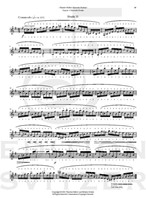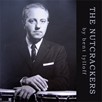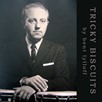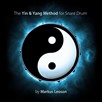
Four Mallets Method
Composer: Theodor Milkov
Instrument: Marimba Method Book
Level: unknown
Published: 2021
Price: €60.00
Item details
-
Description +
-
Preface (extract)
The most often question I have been asked during my clinics and masterclasses is “Why”. The “How”, usually comes much later. Why would you even try to play literature written for Piano/Keyboard on a marimba? How did this idea come to your mind? The simple answer to this is Music.
-
-
Instrumentation +
-
Contents
Chapter 1 Introduction to traditional grip
Chapter 2 Mechanics of the Pianistic Approach
I. Rotation Training on Practise Pad
II. Practise Pad Etudes
III. Periodic Table of Scales Stickings
IV. Sticking Approach
V. Exercices on Marimba
VI. Marimba Etudes
Chapter 3 Introduction to the Moeller Technique
I. Training Moeller Technique on Practise Pad
II. Marimba Exercices on Moeller
III. Marimba Etudes
IV. Concert Etudes
-
-
About the composer +
-
Theodor Milkov
Russian-Greek percussionist Theodor Milkov is widely recognized as one of the most innovative marimba players in the world. Well-known for his pianistic approach to the instrument, revolutionary ideas and technical abilities, he has succeeded in bringing the art of marimba performance to entirely new heights. Milkov's repertoire includes virtuosic transcriptions of music originally written for harpsichord and piano, as well as contemporary compositions dedicated to himself.
Milkov began his percussion studies at the age of seven at the Municipal Conservatory of Patras, Greece, under the supervision of his stepfather Maxim Mankovski. Subsequently, he studied at the Musikhochschule Detmold (Germany), the Royal Conservatoire Den Haag and the Conservatorium Van Amsterdam (The Netherlands), taking lessons with prominent teachers such as Peter Prommel, Hans Zanderoep, Fedor Teunisse, Luuk Nagdegaal, Nick Woud and Gustavo Gimmeno.
In 2017, he hosted the first Milkov International Marimba Summer Camp (MIMSC) – a rigorous training course based on his marimba method "My Pianist Apporach” which is presented in this book. MIMSC quickly became one of the most popular annually recurring percussion events, attracting eager participants from all over the world: USA, Japan, Taiwan, Zimbabwe, Poland, France, Italy, Spain, Russia, Costa Rica, Denmark, Finland, China, Latvia and Hungary.
Since 2017 Theodor is a Yamaha and Vic Firth/Zildjian artist.
-
-
Reviews +
-
Review (Percussive Notes, October 2021)
In this new four-mallet method book, Theodor Milkov introduces his techniques for approaching the marimba in a pianistic way. The book is broken into three chapters, with each chapter including a brief explanation followed by numerous exercises to work on the technique being introduced.
The first chapter is the shortest and serves as an introduction to the traditional grip. Milkov explains very nicely that this is only his preferred grip, and the exercises in the book can be executed using any four-mallet grip. The chapter contains helpful pictures describing the grip along with the mechanics.
Chapter Two, “Mechanics of the Pianistic Approach,” primarily focuses on the rotation used to move up and down scales and arpeggios using this style. The first few exercises are to be done on a practice pad, which can be very useful when focusing on the functioning of the wrists. The following exercises focus on moving around the keyboard using the rotation of the wrists. There are a wide range of patterns given throughout the exercises, as well as moving through all 12 keys.
Chapter Three is focused on implementing the Moeller technique to the marimba. The exercises in this chapter focus on using the down and up strokes to initiate and end phrases, and the tap strokes to fill them in. This section has the most exercises, and probably for good reason.
Milkov has given us a great resource to better understand his approach to the marimba. This book is not for beginning mallet players. Instead, it would be useful for a more advanced player to learn a different musical approach to the instrument.
—Josh Armstrong
-
-
Credits +
-
Front Cover graphics and layout: Ronni Kot Wenzell
Photos: © Thanos Bikos
Portrait: Damian Aronidis
Engraving: Johan Svitzer
Printed in Copenhagen, Denmark
Copyright © Edition SVITZER
www.editionsvitzer.com
-






